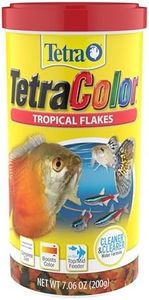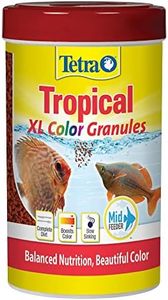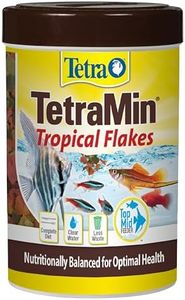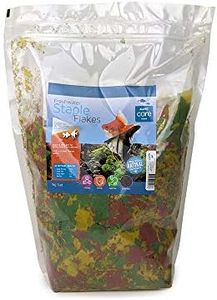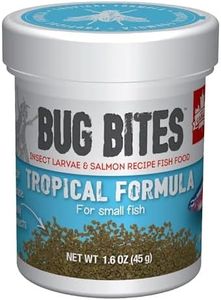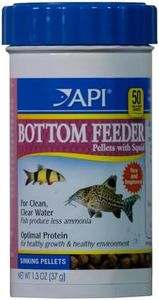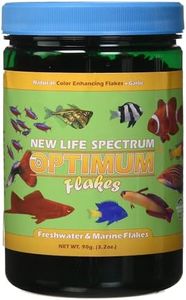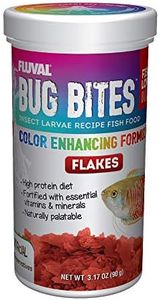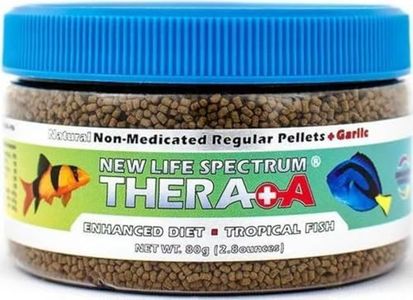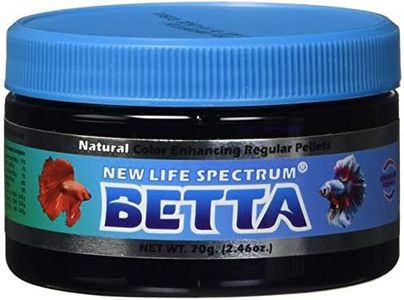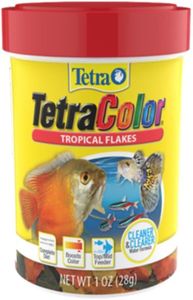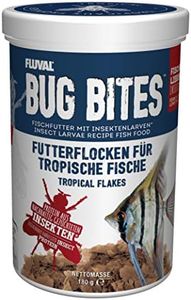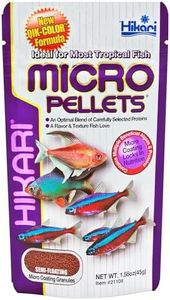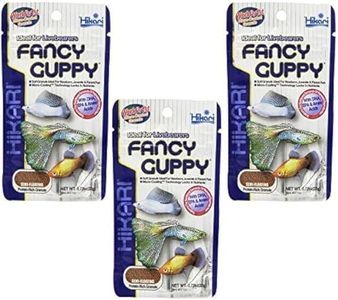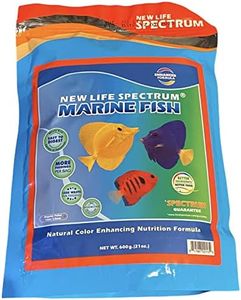We Use CookiesWe use cookies to enhance the security, performance,
functionality and for analytical and promotional activities. By continuing to browse this site you
are agreeing to our privacy policy
10 Best Tropical Fish Food
From leading brands and best sellers available on the web.Buying Guide for the Best Tropical Fish Food
Choosing the right tropical fish food is crucial for the health, coloration, and longevity of your aquarium fish. With a wide variety of food types and formulations available, narrowing down the best option depends on knowing your fish's needs. Understanding key factors will help you select food that supports balanced nutrition, keeps your tank clean, and encourages natural behaviors.Food Type (flakes, pellets, frozen, live, freeze-dried)Food type refers to the physical form of fish food, such as flakes, pellets, frozen, live, or freeze-dried. This is important because different species of tropical fish have different dietary preferences and feeding habits. Flakes and small pellets are great for surface and mid-water feeders, while sinking pellets are better for bottom dwellers. Frozen and live foods can provide extra nutrition and enrichment but require more care. Choose a type that matches your fish's natural feeding style—observe where they feed in the tank and select accordingly for optimal health.
Nutritional Content (protein, fiber, vitamins, minerals)Nutritional content represents the balance of protein, fiber, vitamins, and minerals in the food. Adequate protein is needed for growth and color, especially for young or carnivorous fish; herbivorous fish require more plant material for good digestion. Read labels for balanced nutrition and consider the main fish species you own. Young, growing, or brightly colored fish benefit from higher protein content, while community tanks often do well with food offering a mix of nutrients.
Size and ShapeSize and shape describe the physical dimensions and design of the food pieces. Tiny fish or fry need small, easy-to-eat particles (like micro-pellets), while larger species can handle bigger pieces. Choose a food size that fits comfortably in your fish's mouths to prevent choking and reduce food waste. Watch your fish eat and adjust the size if you see leftovers or struggling.
Floating vs. SinkingFloating vs. sinking refers to whether the food stays at the water's surface or sinks to the bottom. Surface feeders, such as certain tetras, prefer floating foods, whereas bottom dwellers like catfish need sinking varieties. Match the food behavior to your fish's feeding level to ensure everyone gets their share and to keep your tank clean.
Specialized FormulasSpecialized formulas are foods designed for specific needs, like color enhancement, disease resistance, or diet-specific blends (e.g., for cichlids or bettas). These can be helpful if you have a single species tank, are raising fry, or want to boost your fish’s color. Think about your fish’s unique requirements, like long fins, breeding, or vibrant coloring, and pick a formula targeted to those needs if necessary.
Water Impact (clouding and waste)Water impact means how much the food affects the water's clarity and cleanliness. Some foods dissolve quickly and cloud the water, leading to poor water quality and more maintenance. Look for foods with a low-waste formula that don’t break apart easily. Test small amounts and observe your tank—if water remains clear and waste is minimal, it’s a good fit for your setup.
